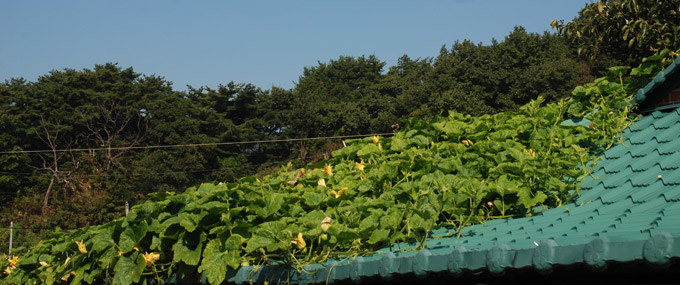
Green roofing is a very old style of roofing. Many homeowners are rediscovering green roof benefits that have been known by humans for hundreds of years. Green roofing systems reduce storm water runoff, noise pollution, and air pollution. Green roofs also keep the entire temperature of the home cooler and provide fresh vegetation on the outside of the roof. That vegetation absorbs the sun’s direct rays and heat. Additionally, the water found in the soil also provides a cooling effect when evaporation occurs. However, one unanswered question that many homeowners find themselves facing is what type of vegetation should be used in their Montgomery roof system.
Study Methods
In October 2012, the University of Cincinnati created a pilot study to determine which plants were best suited for roofing systems during summer conditions. During late summer in 2011 researchers Jill Bader and Ishi Buffam tested five plants native to their region. Their study tested all plant types under regular watering and rainfall-only watering conditions.
When receiving rainfall only, native plants retained 51% of the water. No plant showed any significant superior ability to reduce water run off by increased absorption. Plants that received regular watering only retained 44% of water.
Test Results
Initial results of the green roof study showed that some plants did not fare well when not receiving regular watering. Heat aster (Aster ericoides), loosestrife (Lysimachia lanceolata), and flowering spurge (Euphorbia corollata) did not survive when relying only on rainfall as the primary water source. Both surviving plants, nodding wild onion (A. cernuum) and goldmoss sedum (S. acre), were affected by the sun but did survive only on rainfall.
A major contributing factor to the survival of each plant is its natural adaptation to the extreme demands of the sun. Both surviving plants had shallow roof systems that allow them to use water more effectively that their plant counterparts, during hot weather. A. cernuum has a special bulb that stores water for later use, just like a water tower. S. Acre has thick foliage that has an evolutionary adaptation allowing the plant to close its pores during hot days, to retain water. Pores open at night to complete photosynthesis.
Practical Applications
Each geographic region will have a different native plant type that is best suited for local conditions. According to the Wildflower Center, Montgomery, TX is home to the Common Yarrow (Achillea Millefolium L.). It is a perennial herb that blooms in white or pink. Commonly found in dry soil, the plant has a medium tolerance to CaCO3 and a high tolerance to drought conditions.
The Common Yarrow is a great ornamental plant that should be used in conjunction with other drought resistant plants. It has also been used medicinally to treat fevers, hemorrhaging, and rashes. Native Americans also used it as a source for a tea remedy to stomach ailments. The foliage of the plant is also great for pollinating bees and provides a sweet and pleasant smell when crushed.
For more information about green roofing system and the best plant typesto use in your local region, contact Schulte Roofing. Schulte Roofing has been providing Montgomery, TX professional roofing contractor services for over 18 years. Design your own green roof today.
Reference: University of Cincinnati (2012, October 15). Native plant fares well in pilot green roof research study. ScienceDaily.
